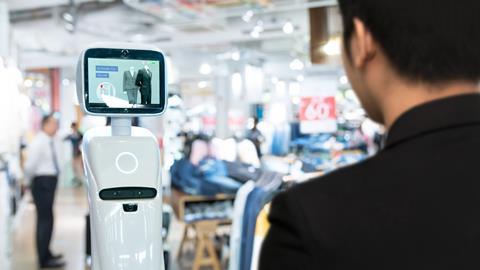As we advance into the fourth industrial revolution, knowing how to take advantage of new technology will be key.
The first industrial revolution came with the invention of the steam engine, the second was sparked by harnessing electricity and mass-market production, and the third occurred after the Second World War with the advent of the computer.
Now observers believe we are in the midst of Industry 4.0 – or the fourth industrial revolution.
Industry 4.0 consists of many major technological innovations all coming to fruition at the same time, working to integrate the virtual and physical worlds.
“The innovations of Industry 4.0 have the power to disrupt the retail landscape as we know it, driving digital change from the factory to the shop floor”
And, as this technology becomes yet more integrated into society, retailers will need to act fast in order to be ahead of the curve.
Key technologies
The four major categories of innovation are:
- Internet of Things (IoT): The interconnectivity of devices via the internet, allowing real-time communication to initiate physical systems, essentially creating smart retail ecosystems.
- Big data and analytics: Using IoT, all devices will collect a colossal amount of data, which retailers can use to inform and streamline all processes.
- Robotics and automation: While robots already have a place in the supply chain, Industry 4.0 could involve a complete overhaul of retail, replacing human administrative roles and freeing up staff for customer-centric work.
- Simulations, 3D printing and augmented reality (AR): Simulations and AR mean products and staff can be virtually tested and trained at a much more effective, fast and low-cost rate, while 3D printing allows for the easy creation of complex and customisable designs.
The innovations of Industry 4.0 have the power to disrupt the retail landscape as we know it, driving digital change from the factory to the shop floor.
PwC claims that businesses which adopt these innovations will, on average, reduce costs by 3.6% per annum and increase revenue by 2.9% per annum by 2021.
To take advantage, retailers need to develop a strategy by identifying which technologies are most critical and investing in them.
This will involve both new hardware and new software. While software will act as the driver for integrated systems, hardware will also need to be updated to carry out the new functions.
Disrupting the shopping experience
Industry 4.0’s biggest impact will be on people – both staff and customers.
For staff, the reduction of manual administrative jobs will encourage a higher level of customer service.
The interconnectivity of devices via IoT will ensure staff are better informed on everything from stock to customer profiles.
“Industry 4.0’s biggest impact will be on people – both staff and customers”
Retailers will also need to invest in either retraining or hiring staff with more digitally focused or data-led skillsets.
With big data as the “new electricity” acting as a driver for innovation, analytical and interpretation skills are the most crucial for mapping a retailer’s strategy for the future.
For customers, personalisation of the shopping experience will be amplified as the IoT connects their own devices to those in store, triggering individual content.
Top tips for retailers
- Act now. It won’t be long before these innovations become a basic facet of the retail ecosystem; retailers should start investing in Industry 4.0 as soon as possible to become a leader rather than a follower.
- Identify the key opportunities. Retailers should identify and prioritise the best technology for their unique retail proposition, which can better serve their customer base.
- Remember that it’s a step-by-step process. A whole company transformation isn’t going to happen overnight – start with a small change, like introducing RFID tags to track inventory, before introducing robots to stack shelves.
- Get everyone involved. Collaborate with the right technology companies and ensure all staff are trained with the new systems in mind.
- Innovation, innovation, innovation. Whether it’s actively adopting new technologies into your processes, experimenting with your own ideas or updating your teams, consistent innovation – no matter how small – is key to keeping the company on top.
Sage’s Business Cloud Enterprise Management solutions can help to future-proof your organisation. Find out more here.






























